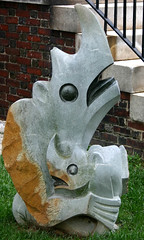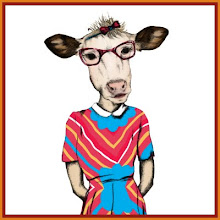 Zimbabwe newspaper The Herald recently ran a column by Dr. Tony Monda, an expert in Art and the business side of art, entitled “Is Zimbabwean art safe on the Internet?”. Within this interesting and informative article is a highly charged plea for international protection of Zimbabwean sculpture.
Zimbabwe newspaper The Herald recently ran a column by Dr. Tony Monda, an expert in Art and the business side of art, entitled “Is Zimbabwean art safe on the Internet?”. Within this interesting and informative article is a highly charged plea for international protection of Zimbabwean sculpture.
Reading Dr. Monda’s post, one might think that there is no protection available for Zimbabwe artists. Indeed, it may seem that way to many of them and Dr. Monda, but it is not the case. The issue is not a lack of protection, but only a lack of enforcement. And, the really good news, enforcement is available. The problem is likely few artists know about the protections granted or how to enforce their rights under these protections.
Dr. Monda asks a number of questions:
What mechanisms do we have at our disposal for the defence and protection of our intellectual property?
Have the local legislation, patent and copyright laws been amend to include the international protection of Zimbabwean cyber-images on the Internet?
Who will monitor or marshal these international cyber felons and the colonial looters?
What punishment can be meted out to these invisible, virtual, foreign gorgons?
Mechanisms
The Zimbabwe Copyright Act protects sculpture as an artistic work. Granted the 1967 act is a bit old and could probably use some updating, but that doesn’t mean Zimbabwe artists are left out in the cold.
Zimbabwe is a member of the Berne Convention and TRIPs, which means that Zimbabwean artists’ copyright rights are protected in other Berne countries the same as they are in Zimbabwe. Dr. Monda is mostly concerned with infringements occurring in the US and Europe. The United States and the majority of European countries are also members of Berne, so Zimbabwean artists’ rights are protected there as well.
Local Legislation
Dr. Monda asks about the protection of “cyber-images on the Internet.” However, he’s really concerned about the protection of sculptures where the means through which the sculptures are being copied is pictures available on the internet. The sculptures themselves are protected by the 1967 Copyright Act (Sec. 2). Copying the sculpture by looking at the sculpture or by looking at a photo of the sculpture is still copying the sculpture and this little Leo suspects that shouldn’t be a problem in an infringement case. Photographs are also protected by the 1967 Act and whether that photo is posted online or printed on a piece of paper should not matter either.
Zimbabwean artists will also be protected by the local legislation in any Berne member-countries via national treatment.
Monitoring Cyber-felons
Ah yes, the part that seems to drive all intellectual property owners bonkers. While there have been many changes such that governments are getting involved in copyright enforcement, copyright is at heart a personal right, owned and maintained by the person or entity in possession of the copyright. It’s probably not the answer Dr. Monda would like, but it’s not a bad answer. From Dr. Monda’s article, we see that some artists do become aware of infringements of their works. “This writer has been approached by several prominent Zimbabwean artists with complaints of seeing replicas of their work on the Internet on Euro-American websites.”
Artists can police websites themselves, work together to help each other spot infringements and ask supporters of their work to keep their eyes open. There may also be other ways to look for infringing items or to work on authenticating the real artwork, thus building up its value over infringing copies.
Punishment
And now we get to the real meat. Perhaps in the country’s current state, the Zimbabwe courts may not be the best places to try to bring a copyright infringement suit. But remember, the infringements of which Dr. Monda speaks are occurring abroad, in Berne member countries. Most courts (as far as this Leo knows) grant jurisdiction in the place where the infringement occurred. Punishment would be either under the local or Zimbabwean Act as decided by the court.
The best scenario is one in which the artist knows who the infringing party is, where the infringing copies are being made and where the infringer resides. In cases where this is not known, a lawyer can help find the answers through various domestic legal tools.
Of course, the natural response to the suggestion that Zimbabwean artists bring suit in the countries where the infringement is occurring would be that the Zimbabwean artists are likely short on cash. This Little Leo suggests starting in places that allow contingency fees. (In the United States, whether an attorney can accept contingency fees for a case is governed by state law.)
So, Dr. Monda and Zimbabwean artists, don’t give up yet. You don’t have to “vow[ed] never to have an image of [my] art on the Internet.” You just need a lawyer, and there are probably many foreign lawyers who can help you enforce your rights in their jurisdictions.
Photo: 205_0597 (Sculpture on the grounds of the Embassy of Zimbabwe) cc-by dbking available at http://www.flickr.com/photos/bootbearwdc/24228763/in/photostream/








